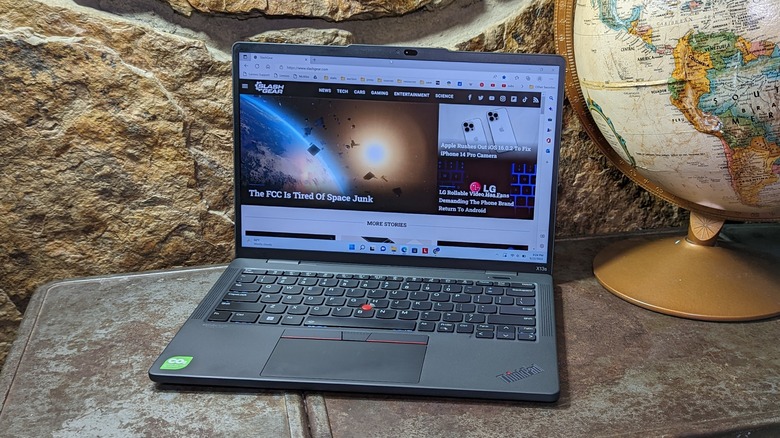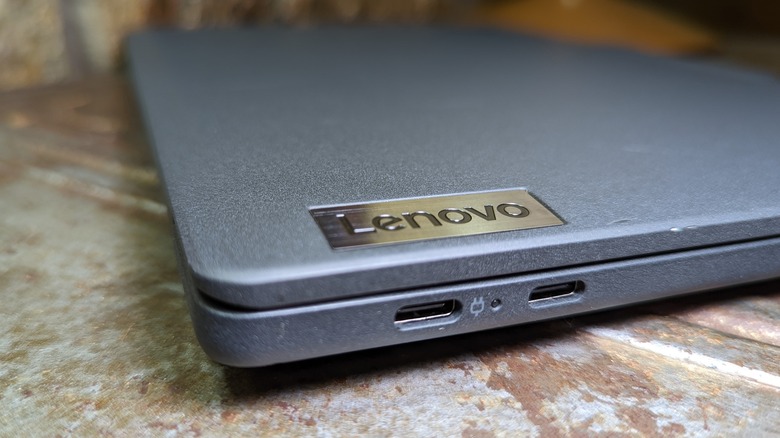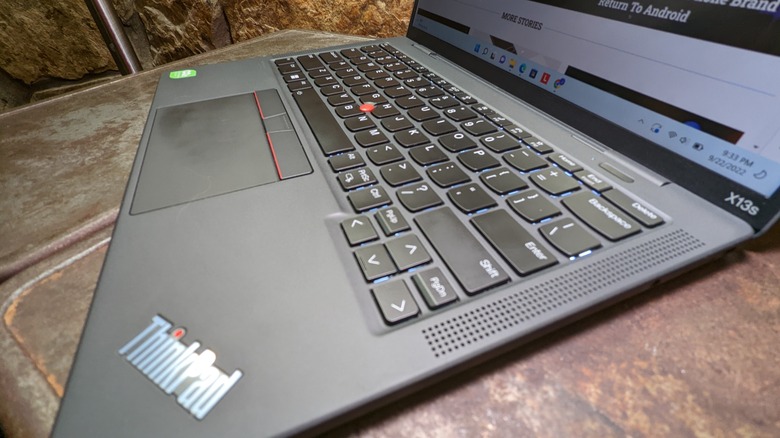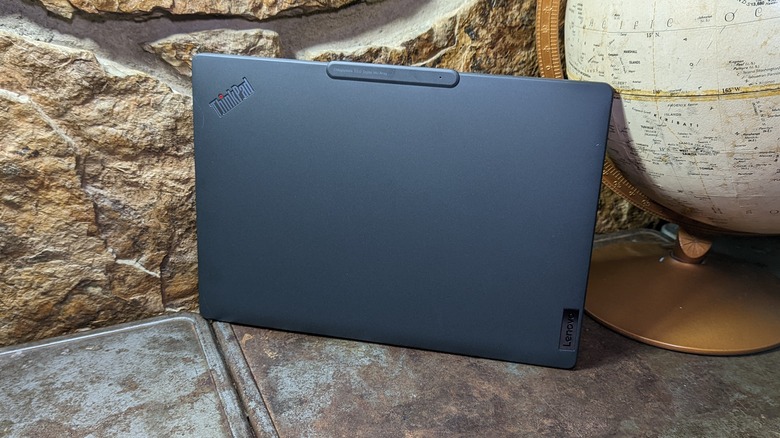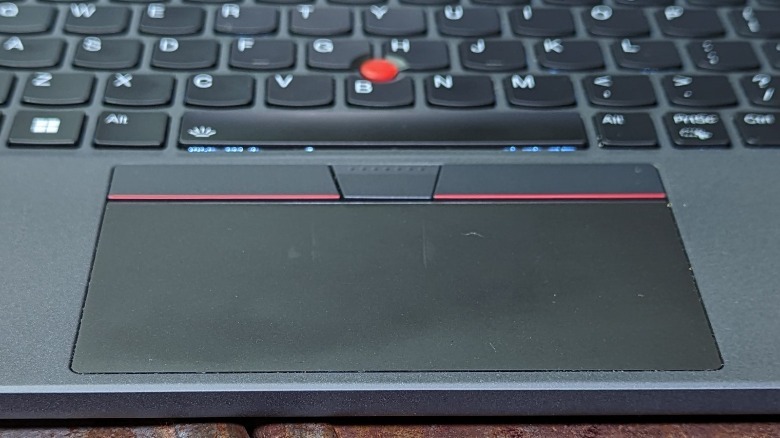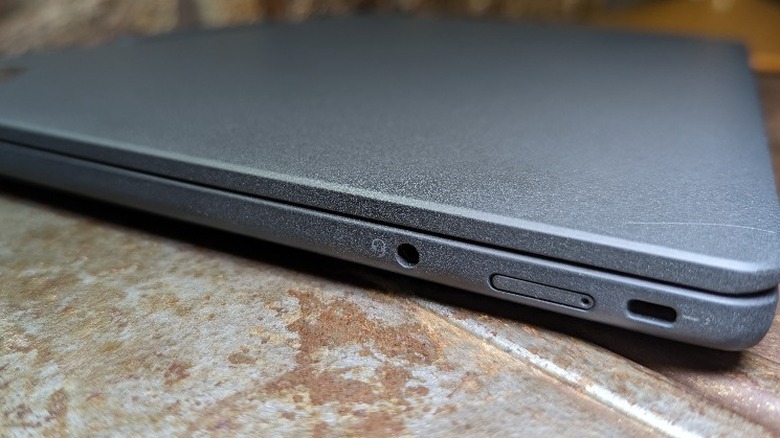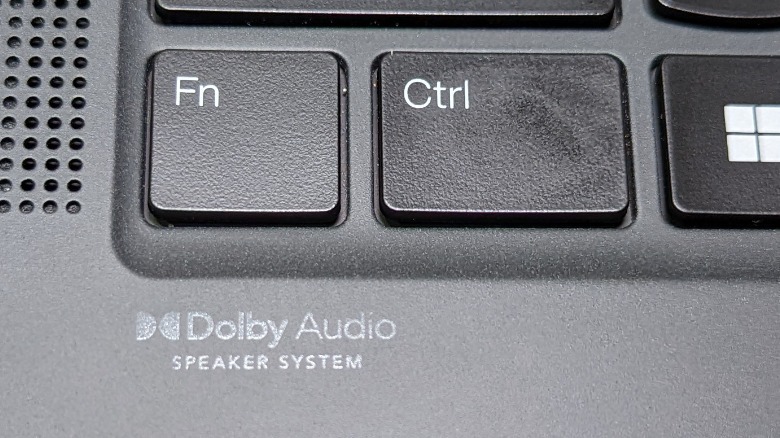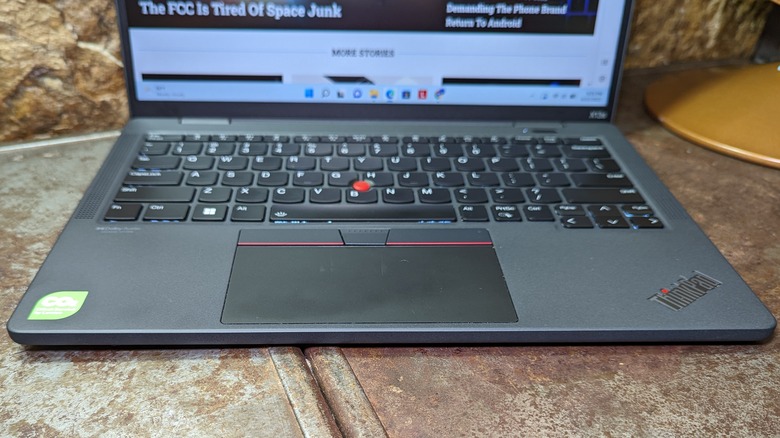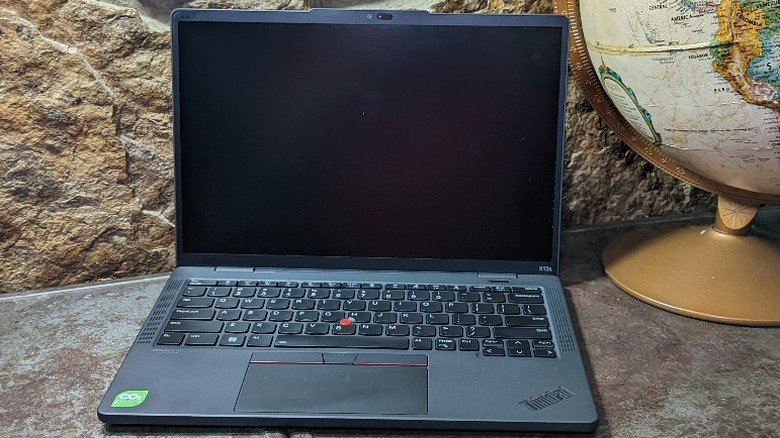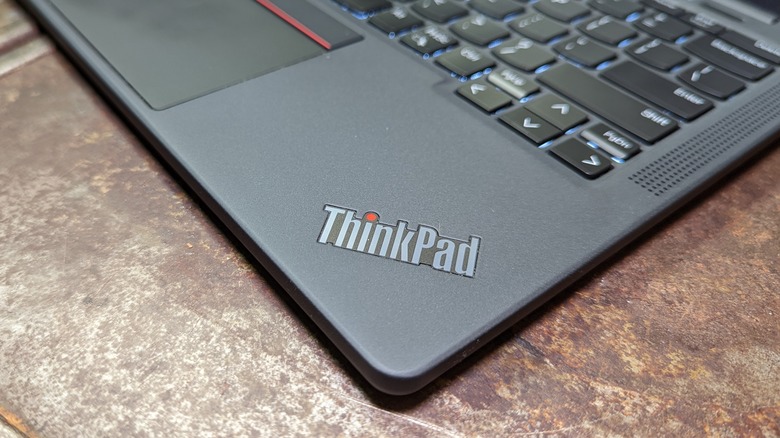Lenovo ThinkPad X13s 5G Review: Is Mobile Speed Enough?
- Lightweight and easy to travel with
- Fast always-on 5G connection
- Emphasis on security by Lenovo
- Processor slower than the competition
- Fingerprint scanner difficult to set up
- Limited number of USB ports
We may receive a commission on purchases made from links.
The ThinkPad line of laptop computers has a long history stretching back to the early days of the Internet when they were a part of the IBM computer behemoth. Many years later under the direction of Lenovo, the ThinkPad is still part of the upper echelon of computing devices marketed toward business users. Those enterprise users can be demanding, expecting hardware that performs on a high level and can keep up with the demands of the fast pace of modern business. To keep up with these extraordinary demands, computer makers must work hard to deliver products that exceed expectations.
Lenovo's ThinkPad X13s 5G is their latest offering to keep up with the demanding and ever-connected office, which is increasingly expanding beyond those office walls into the home, coffee shop, and commuter train. Especially for those whose decisions and output can have dramatic effects with far-reaching ramifications. But is this Lenovo up to the task?
Hardware and first impressions
My first impressions of the ThinkPad X13s 5G were generally positive. It is a compact and lightweight package, weighing in at a scant 2.35 pounds, according to the manufacturer. Lenovo has presented a sleek package that some have compared to an Apple, which is not an unfair comparison, but the Lenovo comes off more as a no-frills yet serious contender. At barely more than half an inch thick, it is a slender and easy-to-manage package. The lightness is partially attributed to the frame composed of recycled magnesium, which means that it is not just light, but strong as well. Overall it is a compact package well suited for hectic travel.
Performance is impressive and the unusual but bold choice to use a Snapdragon processor, the same Qualcomm product powering millions of mobile phones across the globe, is at the heart of it. The Snapdragon 8cx Gen 3 Compute Platform installed on the ThinkPad X13s 5G is a new product developed specifically for mobile computing and allows this machine to take advantage of an architecture that works seamlessly with 5G broadband, capable of up to 10 Gbps. The point is that the Lenovo ThinkPad X13s 5G was built from the ground up to be a mobile device. For the tech junkies who thrive on specifics, which I will freely admit I am not, notable specs for Lenovo to boast are the 13.3-inch WUXGA (1920 by 1200) IPS screen, 16GB RAM expandable to 32GB, 500 GB SSD storage expandable up to 1TB, and Integrated Qualcomm Adreno 690 Graphics included on this machine.
The only ports available are two USB-C on one side. One of these USB-C ports is also the only charging port. For a computer that is used completely while traveling and all data transfer is done via the cloud, two ports should be sufficient. However, if someone gives you a file on a thumb drive and you don't have a USB adapter, you could be in trouble. Furthermore, if you want to use it at home with an external monitor and mouse or keyboard, the lack of ports can be frustrating. Ostensibly, this will primarily be used in the field or on the airplane, but this omission could hamper some users who want to expand its usage at home. It's possible, but a bit frustrating.
Made for a certain sort of user
As a tool to be used in business settings, most users will be interested in what it can do for them and how comfortable they are using it. As someone with a firm grasp of modern technology who may sometimes stray a bit into Luddite territory, my feeling is that the spec sheet is less important than how the equipment works in practice. Additionally, the decision to buy a computer has to be measured against its competition and whether it represents good value for money. With a price tag hovering around $1000, the Lenovo must deliver.
While this machine is brand new and packed with some of the latest technology for personal computing hardware, it is geared toward the professional on the go. There won't be any earth-shattering graphics card performance and the processor will be acceptable for most tasks but is not going to keep up with intense gaming. There are plenty of other computers to use for that. The Snapdragon processor was chosen for its being optimized for mobile usage. It has 5G compatibility baked in and its low power usage keeps it from draining the battery too quickly. Finally, the Snapdragon runs cool enough to negate the need for a cooling fan and keeps the computer from getting too warm, remaining comfortable to use while seated away from a desk for long periods.
Everyday usability
I tend to prefer using a desktop computer with a high-quality mechanical keyboard with good ergonomics and responsive keys. This makes typing on a laptop less than ideal and is something I avoid if possible. First impressions of the Lenovo ThinkPad X13s 5G in this respect have been good and continued use for extensive typing has not changed that impression. Keys are responsive and comfortable enough that I have found few complaints while writing several articles. The backlighting on the keyboard is a welcome addition but also a feature that should be expected at this price point.
The ergonomics are good and there is ample space to rest your palms while typing which prevents fatigue or discomfort. However, I would have liked the position of the function key to be swapped with the control key as I use shortcuts extensively. The bottom row of keys places the function at the far left with control to its right. I found myself too often attempting to copy and paste to no avail, forcing me to constantly look down to find the correct key. For some, this may be a mild inconvenience but it is my chief complaint with this machine and it would take some time to develop the muscle memory for it to become a natural usage for me personally.
The Lenovo ThinkPad X13s 5G offers both a touchpad and a TrackPoint, the nub used to control the cursor that IBM patented in 1997 for use on early ThinkPads (via Google Patents). The touchpad is large and responsive, offering users the option of clicking the pad itself or the use of three mouse buttons sitting above the pad. While the option of the TrackPoint is nice to have, I found little need for it, having been accustomed to using touchpads for many years.
However, the touchpad served up the most frustration in this experience. Light taps worked great for the select function but, perhaps as a force of habit, I tend to depress it fully to make selections and it continually opened up the dialog box that comes from a typical right mouse click. This should happen after holding it for a brief period but it seemed to happen immediately most of the time. I found myself having to retrain myself to just tap it to avoid this frustration, making more effort to do so than should have been necessary.
Multimedia input and output
The ThinkPad X13s 5G is well suited to handle multimedia with its powerful Snapdragon processor and bright and sharp 13.3-inch WUXGA (1920 by 1200) IPS touchscreen display. It is also equipped with a 5MP camera with webcam privacy e-shutter, Dolby stereo speakers, and a triple microphone setup. Efforts have been put forth by Lenovo in making this laptop a good choice for video conferencing. Its target demographic is not gamers or graphic designers, but business people, and in the post-covid era, videoconferencing is essential to keeping companies running. To that end, busy executives generally want equipment that is up to the task, reliable, and able to perform in such a way as to maintain a professional image. To that end, Lenovo has added some clever features.
The 5MP camera is enhanced with AI for better performance for remote work. In Lenovo's press release announcing this device, it says this about the camera, "AI-based auto framing plus Infrared (IR) camera option and standard triple-array microphones providing intelligent noise suppression during conference calls." It is supposed to make video conferencing easier and better with increased clarity.
Most of my work consists of interacting with words rather than people, so opportunities to use this feature are limited. So, I set up a test Zoom meeting to check it out. It was fine. The image and audio were clear on both ends and everything seemed to go as well as it should. Perhaps a better test would happen in a busy Starbucks but the closest one to me is rarely very full inside and I am trying to avoid being the insufferable fool talking to a computer in the corner. On this, I will have to assume Lenovo has properly vetted its tech and proven its performance before shipping these to retailers.
The ThinkPad X13s 5G is also equipped with a triple array microphone setup and Dolby Audio speakers. The triple array microphone works to suppress noise. According to the folks on the other end of my tests on video calls, audio sounds just fine.
The stereo Dolby speakers located on either side of the keyboard do fine for what their purpose is. They are loud enough to hear voices without them sounding thin or tinny, but I would not count on them for powering through a newly remastered AC/DC album or the latest single from the Weeknd. This speaker setup is meant for business calls and performs well at that.
Built-in security
For many traveling professionals, the information carried with them can be sensitive and privileged. For most companies, the security of internal documents is paramount to their competitiveness. When a company has employees out in the field, it wants to know that certain information does not get leaked, especially due to technology mishaps or hacks. The Lenovo ThinkPad X13s 5G is built with this in mind.
The Snapdragon processor "integrates layered secure boot and Microsoft Pluton architecture," according to Lenovo. It also incorporates Thinkshield, a security platform that protects the device against threats in a holistic approach to protecting your data and identity.
This computer utilizes an IR camera for its face detection unlocking and it works great. At first, I felt there was an almost-acceptable lag, but after using it enough times, the process sped up to the point I barely noticed it. It is a fantastic feature that every time I opened up the laptop, it opened up either to the desktop or to what I was working on most recently. It earns top marks for ease of use for that. However, the fingerprint sensor is another story.
The power button doubles as a secure login and that is a great idea for those who want their info to be extra secure. Much like many of us have experienced in setting up fingerprint scanners on mobile phones, the process requires pressing and rotating the finger such that the scanner can get several views to confirm the pattern. No matter what I did whether changing directions or fingers, I could not get it to go through to the last print confirmation step. I finally gave up and set up facial recognition and have been satisfied with that. Perhaps someone could have told me what I was doing wrong, but that should not be necessary.
Performance for the right tasks
Lenovo's decision to use a Snapdragon processor over the usual Intel or AMD may have some impact on the overall performance capabilities of this computer. Also, when compared to the newest Apple M2 chip found in the latest MacBook, results may be a bit lopsided. According to Notebook Check, the performance comparison is not even close. Apple's chip outperforms this device's processor by basically every metric. But that is ok.
Lenovo chose this chip because it was designed expressly for being used with a mobile device that can take full advantage of 5G connectivity. Furthermore, most businesses these days have most, if not all, of the management that keeps them running completely online. What really matters to the executive on the move is fast data transfer and browsing, which the ThinkPad X13s 5G does nearly flawlessly.
The business customers this is aimed at will not be doing any complex rendering of digital graphics or processing of massive sound files, so it is perfectly adequate. While this laptop will never be a MacBook Pro, it is not trying to be one either. For the mobile professional accustomed to using windows and whose company may use legacy software not compatible with macOS, this will probably do the job fine.
Wrap up
The ThinkPad X13s 5G is Lenovo's first release using Qualcomm's newest chip. It is a compact, lightweight, and tidy package that remains comfortable to use for extended periods. The ever-connected nature of it with its built-in 5G hardware makes it appropriate for this time of Zoom conferences, hybrid work schedules, and cloud-based workplaces. Its lightness is will be appreciated during travels with it, and the durability of the magnesium case offers excellent protection from mishaps or carelessness.
For the professional with a non-stationary workplace, it would be great. However, it is a bit slower than some of its competition in the same price range and may not be as useful for activities once the workday is over, such as gaming in your hotel room. That said, it is still a highly capable machine with a lot going for it. At a price point exceeding $1000 (currently $1,550.99 from AT&T), not everyone will be grabbing this off the shelf. But the ThinkPad X13s 5G is not the computer for everyone. For those professionals who need a constant connection in a portable package with ample capabilities, the Lenovo ThinkPad X13s 5G is probably a good choice.
